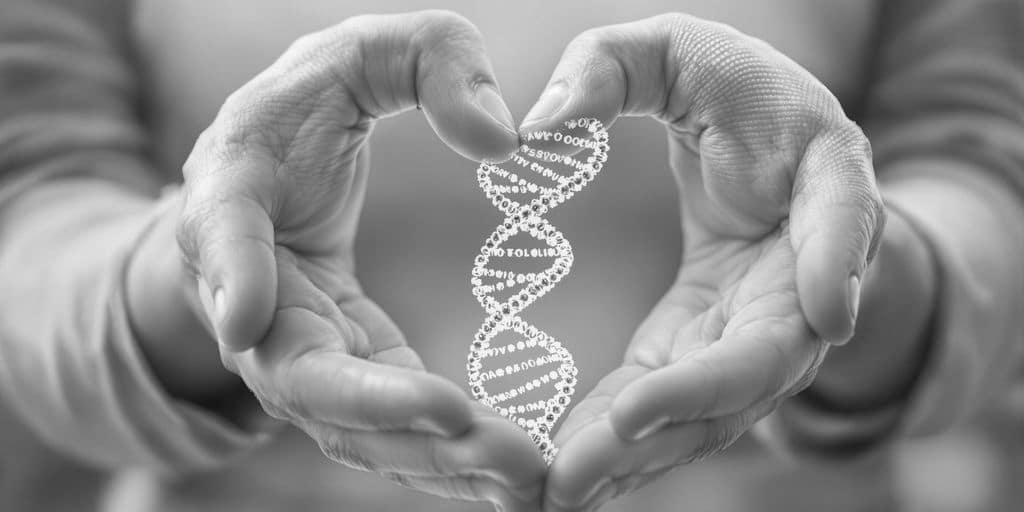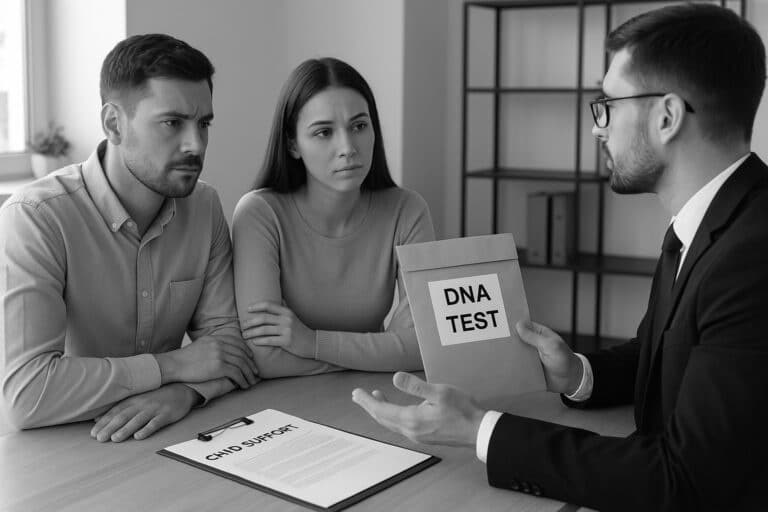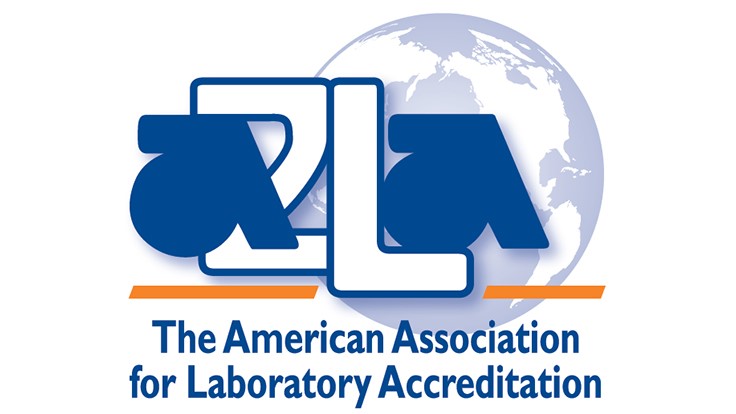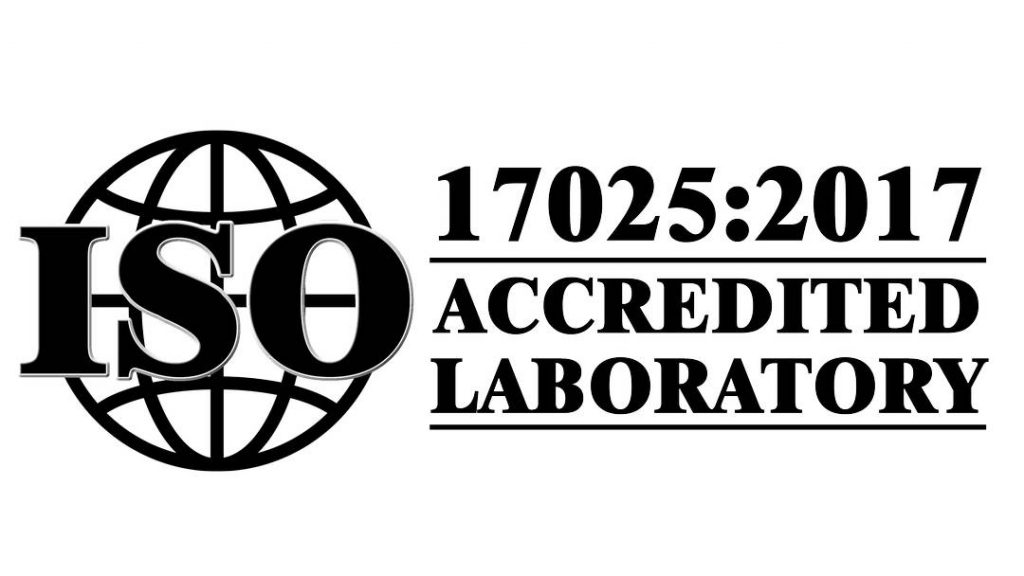Table of Contents
ToggleWhat is a Legal Paternity DNA Test?
When family matters need clear answers, especially for legal reasons, a Legal Paternity DNA Test is often the way to go. We know that figuring out parentage can bring up a lot of questions, and sometimes, official documentation is needed. That’s why we’ve put together this article to provide you with a comprehensive guide. In this article, we’ll delve into the specifics of what a legal paternity DNA test entails, the various scenarios where it becomes essential, and a step-by-step breakdown of the entire procedure. We aim to explain exactly what a legal paternity DNA test involves, why you might need one, and how the whole process works. We want to make sure you have all the information you need from start to finish. to equip you with all the necessary information, from the initial inquiry to the final results, ensuring you feel confident and informed throughout the process. To explain exactly what a legal paternity DNA test involves, why you might need one, and how the whole process works. We want to ensure you have all the necessary information from start to finish.
Key Takeaways
A Legal Paternity DNA Testing is specifically collected and processed to be admissible in court or for official purposes, unlike home tests.
This type of testing is required in situations such as child custody battles, support cases, inheritance disputes, and changes to birth certificates.
The process involves a strict chain of custody, meaning a neutral third party witnesses and documents the DNA sample collection.
Standard collection uses a simple cheek swab, but it must be done by a professional to maintain legal validity.
Results are highly accurate, typically showing a probability of paternity of 99.9% or higher, and are interpreted by accredited laboratories.
Understanding Legal Paternity DNA Testing
What Constitutes a Legal Paternity DNA Test?
A legal paternity DNA test is a specific type of DNA analysis that can be used in official capacities, like in court or for government applications. The main thing that sets it apart is how the samples are collected. It requires a strict process to make sure the results are verifiable and can be trusted in legal settings. This involves a neutral third party overseeing the sample collection to maintain what’s called a chain of custody. Without this, the results aren’t usually accepted for legal matters.
Key Differences from Home DNA Tests
When we talk about home DNA tests, you usually just swab your cheeks and mail them in yourself. It’s pretty straightforward for personal knowledge. However, a legal paternity test is different because the sample collection must be witnessed. A qualified professional, like a nurse or a certified collector, takes the samples. They also verify the identities of everyone involved, often by checking photo IDs and taking pictures. This witnessed collection and the strict handling of the samples afterward are what make the results legally admissible. The actual lab testing process is the same, but the collection is the big differentiator. Think of it like this: a home test is for your information, while a legal test is for official records and court proceedings. You can find accredited labs that perform these tests, ensuring they meet the necessary standards for legal use.
Why Is a Legal Test Necessary?
A legal paternity test is necessary when you need results that can be officially recognized and used in situations with legal implications. This could be for child custody arrangements, child support orders, inheritance claims, or even to amend a birth certificate. Because these tests are conducted under strict protocols, they provide a level of certainty that courts and government agencies require. If you’re involved in a legal dispute or need to establish parentage for official purposes, a legal paternity test is the way to go. It’s the only way to get results that will stand up in court. For instance, if you’re trying to establish biological ties for inheritance purposes, a legal test provides the documented proof needed. We often see people needing these tests for family law matters, and it’s important to get it right the first time. If you’re unsure about the process, you can always consult with a legal professional or the testing facility to understand the requirements for your specific situation. Sometimes, people use genetic genealogy to help identify individuals, but for legal paternity, a direct, witnessed test is required.
When Is Legal Paternity DNA Testing Required?
When questions about biological relationships come up, especially in legal situations, only accurate, court-admissible DNA testing can provide the clarity you need. A legal paternity DNA test is often required for matters concerning child support, custody, or inheritance. You might need one for:
- Child custody or support cases
- Family court proceedings
- Inheritance or estate disputes
- Birth certificate amendments
- Peace of mind with legal documentation
These tests are different from the ones you might do at home because they follow strict procedures to make sure the results are legally sound. For instance, a medical professional must collect the samples and witness the process, which is known as maintaining the chain of custody. This ensures the integrity of the samples and the accuracy of the results when presented in court. It’s important to use an accredited laboratory for these types of tests. If you’re dealing with any of these legal matters, getting a legal paternity test is a necessary step to establish biological facts. You can find more information about fathers’ rights and paternity issues on sites that discuss men’s rights.
The Legal Paternity DNA Testing Process

When you need a paternity test for legal reasons, the process is a bit more involved than just swabbing your cheek at home. It’s all about making sure the results are solid enough for court.
Ensuring Chain of Custody
The most important part of a legal paternity test is the chain of custody. This is basically a documented record that shows who handled the DNA samples from the moment they were collected until they reached the lab. Every person who touches the samples must be accounted for. This prevents any tampering or mix-ups. We have to make sure the samples taken from the child and the alleged father are actually theirs. This meticulous tracking is what makes the results legally admissible. It’s a strict process, but it’s necessary for court purposes. This ensures that the integrity of the samples is maintained throughout the process, from collection to analysis.
The Role of the Witnessed Collection
To maintain that chain of custody, the DNA samples must be collected by a neutral third party. This person, often a medical professional or a trained collector, acts as a witness. They verify the identities of everyone involved, usually by checking government-issued IDs and taking photos. They then collect the DNA, typically using a simple cheek swab, and fill out all the necessary paperwork. This witnessed collection is a key step that differentiates legal tests from home kits.
Accredited Laboratory Procedures
Once the samples are collected and sealed, they are sent to an accredited laboratory. These labs follow strict protocols to analyze the DNA. They use methods like polymerase chain reaction (PCR) to amplify specific DNA markers. The analysis is often done by two separate teams to double-check the findings and ensure the highest level of accuracy. The lab then issues a report that includes a probability of paternity, usually a very high percentage if the man is the father, or an exclusion if he is not. These procedures are standardized to guarantee reliable and legally sound results.
How DNA Samples Are Collected

When we need a legal paternity test, the way samples are gathered is really important. It’s not like just swabbing your cheek at home for your own curiosity. For a legal test, everything has to be done just right to make sure the results can actually be used in court or for official documents. This means a strict process is followed from start to finish.
The Standard Cheek Swab Method
Most of the time, DNA is collected using a simple cheek swab. It’s painless and quick. A trained professional will take a special swab and gently rub it on the inside of your cheek. This collects cells that contain your DNA. The collector usually gets at least two swabs per person, one for each cheek, and they’re placed in separate paper envelopes. Paper is used because it lets the samples breathe, which helps prevent mold. This method is just as reliable as using a blood sample. For legal paternity tests, the collection process is carefully managed to ensure the results are admissible in court. This involves a trained professional collecting the DNA, verifying identities, and maintaining a strict chain of custody. The samples are then sealed and sent to an accredited laboratory for analysis. This method is just as reliable as using a blood sample.
Importance of Professional Collection
Having a professional collect the samples is key for a legal test. They are trained to follow specific procedures that maintain what’s called the chain of custody. This means they document who collected the sample, when, where, and how it was handled. They also verify everyone’s identity, often by checking government-issued photo IDs and taking pictures. This careful handling ensures the integrity of the samples and that the results are legally sound. This meticulous process guarantees that the DNA evidence is sound and can be used for legal purposes.
Alternative Sample Collection
While cheek swabs are the most common, sometimes other methods might be used, though it’s rare for legal paternity tests. In certain situations, a blood sample might be taken by a medical professional. Occasionally, if a person cannot provide a cheek swab or blood sample, other bodily samples might be considered, but these are less common and would need specific lab approval. The main goal is always to get a clean DNA sample that can be properly documented and sent for analysis.
Interpreting Your Legal Paternity Test Results

Once you get your legal paternity test results back, it’s important to understand what they actually mean. The lab reports are written in a specific way to be legally sound, but we can break down the key parts.
Understanding Probability of Paternity
The Probability of Paternity is shown as a percentage. For a man to be identified as the father, this number is usually 99.9% or higher. This means there’s an extremely high chance he is the biological father. It’s a pretty straightforward way to look at the likelihood.
What a Positive Result Means
If the test shows a man is the father, the report will state that he is not excluded as the biological father. This means the DNA markers match in a way that statistically confirms paternity. You might also see a Combined Paternity Index (CPI), which is a ratio showing the odds that the tested man is the father compared to someone else. A high CPI means the odds are very much in favor of him being the father. You can look at this number to see just how strong the evidence is.
What an Exclusion Result Means
On the flip side, if the test excludes the man as the father, the report will clearly state that he is excluded. In this case, the CPI will be 0, and the Probability of Paternity will also be 0%. This indicates that the DNA markers do not match, and he is not the biological father of the child. It’s a definitive outcome.
Result Summary
This summary compares the Probability of Paternity for two outcomes and lists their Combined Paternity Index (CPI).
Chart summary: Not excluded: 99.9% Probability of Paternity. Excluded: 0% Probability of Paternity.
Not excluded
Combined Paternity Index (CPI): 43,110,000:1
High ratio indicates strong support for paternity.
Excluded
Combined Paternity Index (CPI): 0
Zero indicates exclusion.
Choosing a Provider for Legal Paternity DNA Testing
When you need a legal paternity DNA test, picking the right place to get it done is important. It’s not like picking up a kit at the grocery store for curiosity’s sake. These tests have to follow strict rules to be accepted by courts or for official documents. You need to make sure the lab you choose is properly accredited and follows all the necessary procedures. This means looking for labs that are recognized by specific organizations that set standards for genetic testing.
Accreditation Standards for Labs
Accreditation is a big deal for legal DNA testing. It means a lab has been reviewed and meets certain quality and accuracy benchmarks. Look for labs accredited by bodies like the American Association of Blood Banks (AABB) or similar international organizations. These accreditations show that the lab has passed rigorous inspections and follows strict protocols for everything from sample handling to result reporting. It’s a sign that they are serious about providing reliable data. For example, companies like us, Odosek Lab Solutions, have set the standard for reliable genetic analysis. We have been pioneers in genetic testing, using methods that are now common across the industry.
Finding a Reputable Testing Facility
When searching for a testing facility, you want one that has a solid reputation. This often means looking for labs that have been around for a while and have a history of accurate results and good customer service. Check reviews and see if they have experience with legal cases. A good facility will have clear procedures for sample collection and will be able to explain the chain of custody process to you. They should also be able to provide results within a reasonable timeframe, usually a few business days, though faster options might be available for an extra fee.
Cost Considerations for Legal Tests
The cost of a legal paternity test can vary. Generally, a legal test will cost more than a home DNA test because of the extra steps involved in collection and documentation. Expect to pay a fee for the lab processing and potentially another fee for the collection appointment itself. It’s wise to get a clear breakdown of all costs upfront. Some labs might charge around $300-$400 for a legal paternity test, with options for expedited results at an additional charge. You should compare prices but also remember that the cheapest option might not always be the most reliable for legal purposes.
Here’s a general idea of what to expect:
- Lab Processing Fee: Covers the DNA analysis.
- Collection Fee: Paid to the facility or collector for the supervised sample collection.
- Optional Rush Fees: For faster turnaround times.
When choosing a provider, prioritize accuracy and legal admissibility above all else. The process must be documented meticulously to ensure the results hold up in court or for official use. This involves verifying identities and maintaining a strict chain of custody from the moment the sample is collected until it reaches the laboratory.
Prenatal Legal Paternity DNA Testing
Sometimes, you might need to establish paternity before a child is born. This is where prenatal legal paternity DNA testing comes into play. It allows you to determine if a man is the biological father of a child while the mother is still pregnant.
Non-Invasive Prenatal Paternity Testing
The most common method for prenatal legal paternity testing is called a Non-Invasive Prenatal Paternity (NIPP) test. This is pretty neat because it only requires a blood sample from the mother and a cheek swab from the potential father. The mother’s blood contains small fragments of the fetus’s DNA. Lab technicians analyze these fragments and compare them to the DNA from the potential father. This test is highly accurate, often exceeding 99.9% probability of paternity, and it’s considered very safe for both the mother and the baby. We can typically perform this test starting around the eighth week of pregnancy. It’s important to remember that for legal purposes, the sample collection process must still adhere to strict chain-of-custody protocols, just like any other legal DNA test. This means a qualified professional must oversee the collection and document everything properly.
When to Consider Prenatal Testing
There are several situations where a prenatal legal paternity test might be necessary. For instance, if there are questions about paternity that need to be resolved before the baby arrives, perhaps for legal reasons related to child support or custody arrangements that will be established shortly after birth. It can also be helpful in cases of inheritance or if there’s a need to amend a birth certificate with accurate information from the outset. Knowing paternity early can help in planning for the child’s future and ensuring all legal matters are in order before the baby is even born. We often see this requested when parents are not married or if there’s any uncertainty about the biological father.
Safety and Accuracy of Prenatal Tests
As mentioned, the NIPP test is considered very safe. The primary risks are minimal and similar to those associated with any blood draw, such as slight pain, bruising, or fainting at the collection site. It does not pose a risk to the pregnancy itself. The accuracy of these tests is exceptionally high, providing reliable results that can be used in legal settings. The accuracy is so good, in fact, that the Paternity Index, a statistical measure of paternity, is typically well above the 99.5% threshold, which is required for many legal applications. When conducted under legal chain-of-custody conditions, these results are fully admissible in court, giving us the legal certainty you need.
Want to know for sure if a child is yours before they are born? Our prenatal legal paternity DNA testing can give you the answers you need. It’s a simple process that provides peace of mind.
Wrapping Things Up
So, we’ve gone over what a legal paternity DNA test is and why you might need one. It’s really about getting clear answers, especially when legal matters are involved. Remember, the key difference from a home test is the strict process for collecting samples, which keeps everything official and court-ready. If you’re facing situations like child support, custody, or inheritance questions, a legal test is the way to go. It might seem a bit involved, but working with accredited labs and following the proper steps makes sure your results are solid. We hope this helps you understand the process better.
Frequently Asked Questions
What makes a paternity DNA test 'legal'?
A legal paternity DNA test is a special kind of DNA test. It’s used when you need official proof of who a child’s father is, like for court cases or changing a birth certificate. The biggest difference from a regular home test is how the DNA samples are collected. For a legal test, a trained professional must collect the samples, and they have to follow strict rules to make sure everything is tracked properly. This is called maintaining the ‘chain of custody.’
When would I need a legal paternity test instead of a home test?
You will need a legal paternity test when the results have to be accepted by courts or government agencies. This often happens in situations like child custody battles, when figuring out child support payments, or if there’s a disagreement about inheritance. It’s also needed if you want to officially add or change a father’s name on a birth certificate. Basically, if the results need to stand up in an official setting, you need a legal test.
How does the sample collection for a legal test work?
The process for a legal paternity test is designed to be very secure. First, you’ll schedule an appointment at a special collection site. When you get there, the person collecting the DNA will check everyone’s ID and take photos to confirm who they are. They’ll then carefully collect the DNA, usually with a simple cheek swab, and make sure all the paperwork is filled out correctly. This whole process ensures the samples are handled properly from start to finish.
How do I give DNA samples for a legal test?
For legal tests, you usually use a simple cheek swab. It’s painless and quick! A trained collector will gently rub a soft swab on the inside of your cheek to collect cells. This method is just as accurate as a blood test but is much easier and safer. The collector will give each person their own swabs to use.
How do I understand the results of a legal paternity test?
When you get the results, they’ll usually tell us the probability of paternity. If the test shows a high probability, like 99.9% or more, it means the tested man is very likely the biological father. If the test shows he is ‘excluded,’ it means he is not the biological father. The report will clearly state the conclusion based on the DNA comparison.
How do we pick a good place to get a legal paternity test done?
When choosing a place for a legal paternity test, always look for labs that are accredited by recognized organizations. This means they follow strict quality and accuracy standards. You can usually find reputable testing centers by searching online for ‘legal DNA testing near me’ or asking a legal professional for a recommendation. While home tests might seem cheaper, they aren’t valid for legal matters, so investing in a proper legal test is important.









